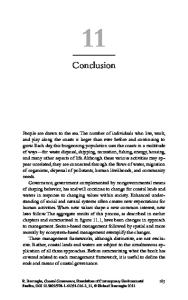Conclusion: Death of a Spectacle
The death penalty in Australia changed dramatically over the colonial period—from the way it was practised down to the type of crimes that could see someone hang. Any understanding of why these shifts occurred needs to consider that colonial authorities w
- PDF / 3,682,007 Bytes
- 279 Pages / 433.701 x 612.284 pts Page_size
- 76 Downloads / 301 Views
A History of Capital Punishment in the Australian Colonies, 1788 to 1900
Steven Anderson
Palgrave Histories of Policing, Punishment and Justice
Series Editor David G. Barrie University of Western Australia Crawley, Australia
Since the 1960s, studies of police, punishment and the courts have been an integral and popular part of historical scholarship, and have followed in the historical trajectory of a more expansive criminal justice apparatus around the world. This international book series aims to examine and debate some of the most pressing issues and problems in the field, and to stimulate new directions in research. It will showcase the work of both emerging and leading scholars of the social, cultural and institutional histories of police, punishment and the judicial sphere, and welcomes work grounded in various disciplines including criminology, sociology, history, law, legal history and political science.
More information about this series at http://www.palgrave.com/gp/series/15080
Steven Anderson
A History of Capital Punishment in the Australian Colonies, 1788 to 1900
Steven Anderson The Department of History The University of Adelaide Adelaide, SA, Australia
Palgrave Histories of Policing, Punishment and Justice ISBN 978-3-030-53766-1 ISBN 978-3-030-53767-8 https://doi.org/10.1007/978-3-030-53767-8
(eBook)
© The Editor(s) (if applicable) and The Author(s), under exclusive license to Springer Nature Switzerland AG, part of Springer Nature 2020 This work is subject to copyright. All rights are solely and exclusively licensed by the Publisher, whether the whole or part of the material is concerned, specifically the rights of translation, reprinting, reuse of illustrations, recitation, broadcasting, reproduction on microfilms or in any other physical way, and transmission or information storage and retrieval, electronic adaptation, computer software, or by similar or dissimilar methodology now known or hereafter developed. The use of general descriptive names, registered names, trademarks, service marks, etc. in this publication does not imply, even in the absence of a specific statement, that such names are exempt from the relevant protective laws and regulations and therefore free for general use. The publisher, the authors and the editors are safe to assume that the advice and information in this book are believed to be true and accurate at the date of publication. Neither the publisher nor the authors or the editors give a warranty, expressed or implied, with respect to the material contained herein or for any errors or omissions that may have been made. The publisher remains neutral with regard to jurisdictional claims in published maps and institutional affiliations. Cover illustration: f8 archive/Alamy Stock Photo This Palgrave Macmillan imprint is published by the registered company Springer Nature Switzerland AG The registered company address is: Gewerbestrasse 11, 6330 Cham, Switzerland
Dedicated to the memory of Glenn Anderson (1954–2011)
Contents
1
Introduction: Thinking About
Data Loading...











